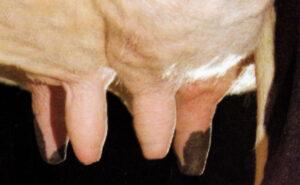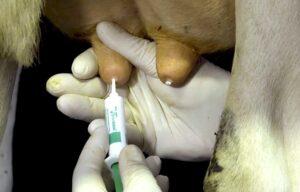Get a 24 hour weather forecast
A good dry off procedure is essential to prevent the introduction of new infection into the cow’s udder – hygiene is crucial here.
Cow’s tails should be clipped in advance of drying off.
Yields should be reduced by decreasing the plane of nutrition in the week prior to dry off and cows should be dried off abruptly (do not skip milkings).

Pick a dry day for the job, as it is difficult to maintain high standards of hygiene when cows are wet. Dry the cows off in batches (ideally no more than 20 at the time depending on available help), if too many cows are dried off at once standards can slip.
On the day of dry off, make sure all your equipment is ready to go – marking spray, gloves, surgical spirits and cotton wool or disinfectant teat wipes, antibiotic tubes and sealer, disposable paper towel.
The dry cow’s environment is critical to the success of the dry period. Ideally dry cows should be housed away from the milking parlour. The sound of the milking machine can induce let down in some cows.
Space is important – enough cubicles (at least one cubicle per cow) and enough feed space to prevent the build of dung in areas.
Pay close attention to the hygiene of the cubicles in the dry period. The greatest risk period for acquiring new infections in the dry period are in the two weeks following dry off and the two weeks before calving, so extra care should be taken at these times. Cow’s udders should be checked daily for any heat or swelling particularly during these risk periods.
The success of the dry period on your farm can be assessed by having an early milk recording next spring – within 60 days after the start of calving. Continuing with regular milk recording throughout the year provides information that is crucial to successfully managing SCC.
